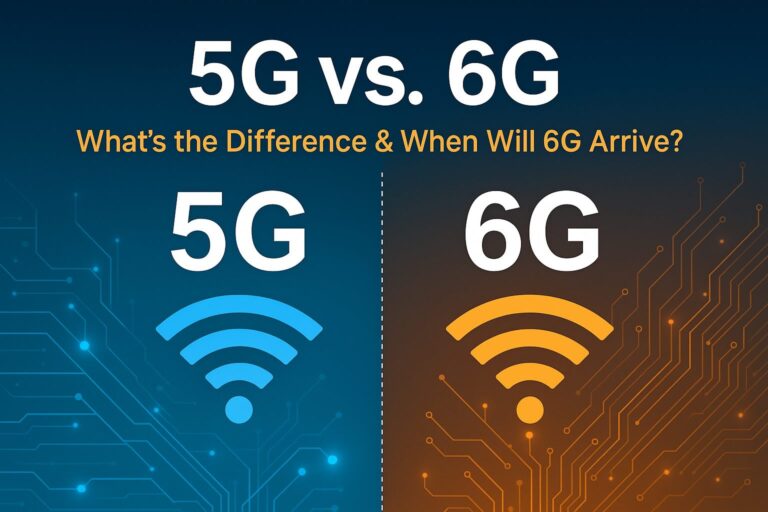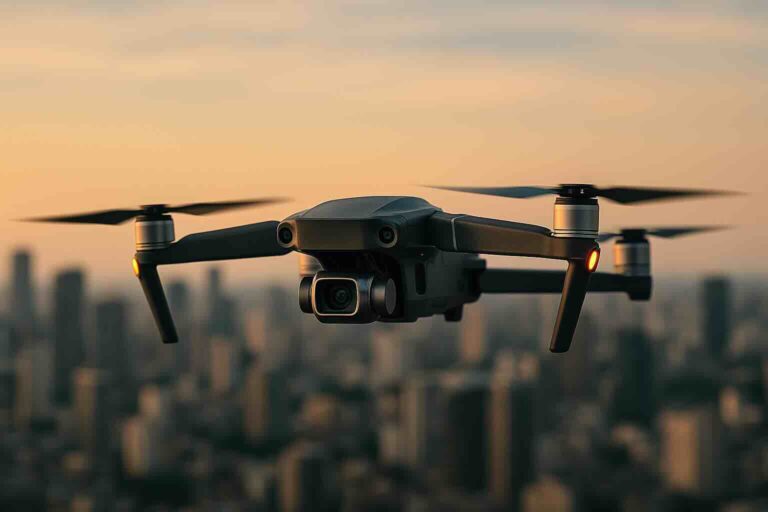Wearable technology has come a long way from the early days of pedometers and basic fitness trackers. Today, wearables encompass a wide range of devices, including smartwatches, health-monitoring devices, augmented reality glasses, and even smart clothing. As technology continues to evolve, so do the capabilities and applications of these devices. This article explores the latest trends in wearable technology, examines current innovations, predicts future developments in this rapidly advancing field, and highlights the key players in the market.
The Early Days of Wearable Technology
The concept of wearable technology dates back to the 1960s with the development of the first wearable computer by Edward O. Thorp and Claude Shannon. This device, designed to predict roulette wheels, was a far cry from today’s sleek and multifunctional wearables. Fast forward to the early 2000s, and we saw the introduction of basic fitness trackers like the Fitbit, which could count steps and monitor basic activity levels.
Current Trends in Wearable Technology
Smartwatches
Smartwatches have become the cornerstone of wearable technology, offering a plethora of features beyond just telling time. Leading brands like Apple, Samsung, and Garmin have set the standard with devices that include health and fitness tracking, GPS navigation, communication capabilities, and more.
- Health Monitoring: Modern smartwatches can monitor heart rate, blood oxygen levels, and even detect irregular heart rhythms. The Apple Watch Series 8, for example, includes an ECG app that can alert users to potential heart issues.
- Fitness Tracking: These devices track various physical activities, from running and cycling to swimming and yoga. Advanced metrics such as VO2 max, recovery time, and sleep analysis provide users with comprehensive insights into their fitness levels.
- Smart Features: Smartwatches can receive notifications, make calls, and even run apps independently. Integration with smart home devices allows users to control their environment directly from their wrist.
Health-Monitoring Devices
Health-monitoring wearables have seen significant advancements, offering non-invasive ways to monitor various health metrics.
- Continuous Glucose Monitors (CGMs): Devices like the Dexcom G6 and the Freestyle Libre 2 provide real-time glucose readings for diabetics, reducing the need for frequent finger-prick tests.
- Wearable ECG Monitors: Beyond smartwatches, standalone ECG monitors like the KardiaMobile offer medical-grade heart monitoring that can be shared with healthcare providers.
- Sleep Trackers: Devices such as the Oura Ring and the Withings Sleep Analyzer offer detailed sleep analysis, including tracking sleep stages, heart rate variability, and breathing disturbances.
Augmented Reality (AR) Glasses
AR glasses represent a significant leap in wearable technology, blending the physical and digital worlds.
- Google Glass Enterprise Edition: While the consumer version of Google Glass faced criticism, the enterprise edition has found success in industrial applications, aiding workers with real-time information and hands-free operations.
- Microsoft HoloLens: Targeted at professional use, HoloLens allows for complex visualizations in fields like engineering, healthcare, and education, enabling tasks such as remote assistance and 3D modeling.
Smart Clothing
Smart clothing integrates sensors and connectivity directly into fabrics, offering unique advantages over traditional wearables.
- Athletic Apparel: Brands like Under Armour and Athos have developed clothing embedded with sensors that track muscle activity, heart rate, and breathing patterns, providing athletes with detailed performance data.
- Medical Applications: Smart textiles can monitor patients’ vital signs continuously and non-invasively. For example, the Hexoskin Smart Shirt tracks heart rate, breathing rate, and movement, offering valuable data for healthcare providers.
Future Innovations in Wearable Technology
As technology progresses, the future of wearable technology looks promising, with several exciting innovations on the horizon.
Advanced Health Monitoring
Future wearables are expected to offer even more sophisticated health monitoring capabilities.
- Non-Invasive Blood Glucose Monitoring: Efforts are underway to develop non-invasive glucose monitors, which could revolutionize diabetes management. Companies like Apple are reportedly working on integrating this feature into future versions of the Apple Watch.
- Wearable Ultrasound: Researchers are exploring the possibility of wearable ultrasound devices that could provide real-time imaging for various medical applications, from monitoring organ health to detecting tumors.
Enhanced Integration and Interoperability
Future wearables will likely offer greater integration with other devices and systems.
- Seamless Ecosystems: Wearables will become central to interconnected ecosystems, integrating seamlessly with smartphones, smart home devices, and even vehicles. This will enable more personalized and automated experiences.
- Interoperable Health Data: Efforts are being made to standardize health data formats, allowing wearables to share data more easily with healthcare providers and electronic health records (EHR) systems.
Improved User Experience and Design
The design and user experience of wearables will continue to improve, making them more comfortable and user-friendly.
- Flexible and Stretchable Electronics: Advances in materials science will lead to the development of flexible and stretchable electronics that can conform to the body more naturally, improving comfort and functionality.
- Longer Battery Life: Innovations in battery technology, such as solid-state batteries, promise longer battery life and faster charging times, addressing one of the main limitations of current wearables.
New Applications and Use Cases
The expanding capabilities of wearable technology will open up new applications and use cases.
- Mental Health Monitoring: Wearables could be used to monitor mental health by tracking physiological indicators of stress, anxiety, and depression. For example, devices could analyze patterns in heart rate variability and sleep to provide insights into mental well-being.
- Environmental Monitoring: Future wearables might include sensors to monitor environmental conditions, such as air quality and UV exposure, helping users make informed decisions about their activities and health.
Key Players in the Wearable Technology Market
Several companies dominate the wearable technology market, each bringing unique innovations and capturing significant market shares.
Apple Inc.
- Market Share: Apple leads the wearable technology market, primarily through its Apple Watch line. As of Q4 2023, Apple held a market share of approximately 30% in the global wearable market.
- Innovations: The Apple Watch Series 8 features advanced health monitoring, including ECG, blood oxygen level detection, and fall detection. Apple continues to push boundaries with rumored developments in non-invasive glucose monitoring.
Samsung Electronics
- Market Share: Samsung is a major player in the wearable market, with a market share of around 10%.
- Innovations: Samsung’s Galaxy Watch series offers comprehensive health and fitness tracking, integration with Samsung’s ecosystem, and advanced features like blood pressure monitoring.
Fitbit (Owned by Google)
- Market Share: Fitbit, now part of Google, holds a significant share in the wearable market, approximately 5-6%.
- Innovations: Fitbit devices are known for their fitness tracking capabilities. The Fitbit Sense includes features like ECG, skin temperature monitoring, and stress management tools.
Garmin
- Market Share: Garmin is a leader in fitness and outdoor wearables, with a market share of about 7%.
- Innovations: Garmin’s wearables are renowned for their GPS accuracy, rugged designs, and extensive fitness metrics, including advanced performance analytics for athletes.
Huawei
- Market Share: Huawei has gained a foothold in the wearable market, particularly in Asia, with a market share of around 6%.
- Innovations: Huawei’s wearables, like the Huawei Watch GT series, offer long battery life, robust health tracking features, and competitive pricing.
Xiaomi
- Market Share: Xiaomi is known for affordable wearables, holding a market share of about 8%.
- Innovations: Xiaomi’s Mi Band series provides essential fitness tracking features at a low cost, making it popular among budget-conscious consumers.
Conclusion
Wearable technology has made significant strides since its inception, evolving from simple fitness trackers to sophisticated devices capable of monitoring various aspects of our health and enhancing our daily lives. As technology continues to advance, we can expect to see even more innovative and impactful wearables in the future. From advanced health monitoring to seamless integration with other devices, the possibilities are vast and exciting. With major companies like Apple, Samsung, Fitbit, Garmin, Huawei, and Xiaomi leading the charge, the wearable technology market is poised for continued growth and innovation, promising to shape the future of personal health and connectivity.












